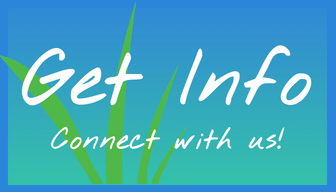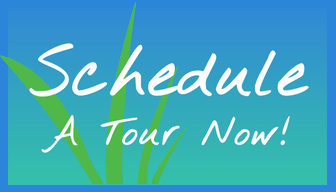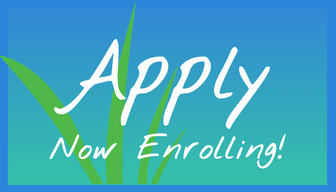By Luann Overmyer
Our body can be viewed as a community of interdependent neighborhoods filled with diversely skilled laborers (cells) that need nourishment and refuse management to do their jobs well. Cells organize themselves into organs, glands, and tissues with specific jobs that contribute to the harmonious functioning of the whole. Nutrients are processed in the digestive system and carried through the blood stream and assimilated waste is carried out through the lymph fluid, and then the urine. The circulation of fluids is critical for the health of the community. The circulatory system uses the heart muscle as a pump to move the blood. The lymph system uses the relaxation and contraction of muscles to move the fluids. All muscles need exercise to work optimally. Exercise stimulates respiration and brings in essential oxygen.
Skeletal muscles move the body by moving the bones. The bones provide a strong framework for the body. Joints add flexibility to bone strength. But it is the muscles that give the bones mobility. Muscles work in pairs, with muscles on one side of the joint lengthening while the muscles on the opposite side contract. Muscles contract on signals from the nervous system.
The nervous system is composed of the brain, the spinal cord and the nerves. The job of the nervous system is to help all the neighborhoods work together and to correlate and govern appropriate responses to whatever happens inside the body or the body’s reactions to the external environment.
The network of nerves that regulates our restorative bodily activities is called the parasympathetic nervous system. This system helps us to conserve energy and governs our internal relationship with ourselves. The network of nerves that regulates our responses to the external environment is called the sympathetic nervous system. This system manages our activities and relationships with the external environment and others.
The brain, spinal cord and nerves work as a team and are referred to as the central nervous system. Sensory nerves send electrical signals to the spinal cord and brain. Motor nerves carry the brain and spinal cord’s regulating responses back to the muscles of the body. Our sensory and motor nerves make up a reflexive feedback loop that works to sense, orient, protect and move the body.
One particular team of sensory nerves are called proprioceptors. They surround the joints and are found in the muscles and tendons and the greatest number are in the subtalar joint and the inner ear. The proprioceptive nerves are vital to balance. Sometimes referred to as a 7th sense, these nerves communicate movement and positioning information to the central nervous system so the motor nerves can appropriately coordinate movement and balance.
One day I stopped by an athletic store to buy a pair of tennis shoes. The young salesman helping me began to talk about a particular brand of shoes being designed to facilitate proprioception. I listened attentively as he described that proprioception enables us to track ourselves as we move through space, constantly equilibrating all our movements so we maintain balance and that these shoes were designed to assist proprioception. Well, of course I was sold and bought the shoes.
Just like the shoe salesman, the nervous system is a good communicator and a very fast and efficient one. By means of proprioception we know just how high to lift our foot as we walk upstairs, how to pick up a pen and jot a note, how to find the rhythm to jump rope or activate the hand-eye coordination to serve a tennis ball or swing a golf club. We rely on the reflexive action of proprioception for balance and to regulate all our movements.
The reflexive mechanism of proprioception is the basis for understanding how Ortho-Bionomy works to stimulate self-correction. Positioning for comfort coupled with slight compression toward the joint stimulates our proprioceptive sense and brings an awareness — a kinesthetic sense — of the positional relationship of our various body parts, and the motor nerves use that proprioceptive information to regulate our movements.
The brain and the spinal cord (central nervous system) reflexively respond to the proprioceptive information from the sensory nerves to bring a more balanced tone to the muscles surrounding the joint via the motor nerves.
In Ortho-Bionomy we are training our own proprioceptive / kinesthetic awareness as well. We practice positioning and refine palpatory listening skills to discover subtle signs of self- correction at work in the body. We learn to track our own nervous system for signs of mood, proprioceptive comfort in our own bodies, and we learn to develop a greater sense of ourselves at ease, as a physical and energetically sensitive being connected to another physically and energetically sensitive being in right relationship.
When I was first studying Ortho-Bionomy I was also practicing Aikido. I remember a particular moment when I was moving the client’s arm into a position for a shoulder release, and I felt my whole body and the client’s whole body responding to the flow of the movement just as I would feel the flow in Aikido. This kinesthetic sense of being in right relationship with our own whole being and another whole being is a vital part of community connection that allows the parts to work better together. When we are at ease within ourselves, we connect and function better with our clients and that sense of right relationship is sensed and fosters trust and healing within all the communities—-the community of the body, of the mind, and of the spirit.
I invite you to explore the kinesthetic sense of ease and flow in your own practice. Although a myriad of communities are at work in our own bodies, our ability to relax and acknowledge their presence and functional capacity, brings us to a sense of recognition for the amazing self-corrective possibilities when the communities work together in ease.



